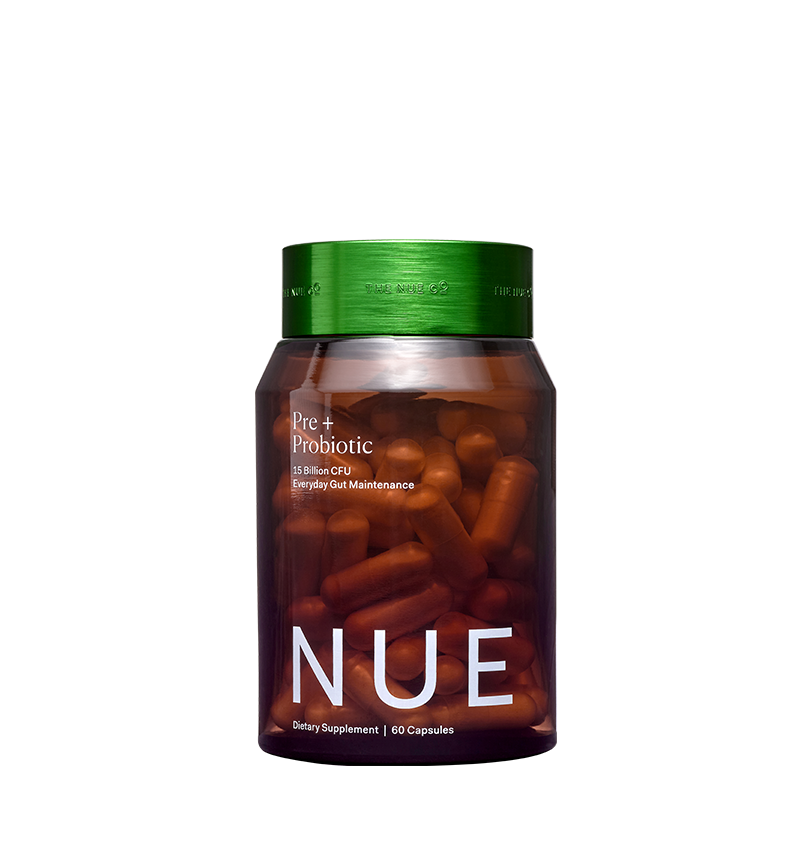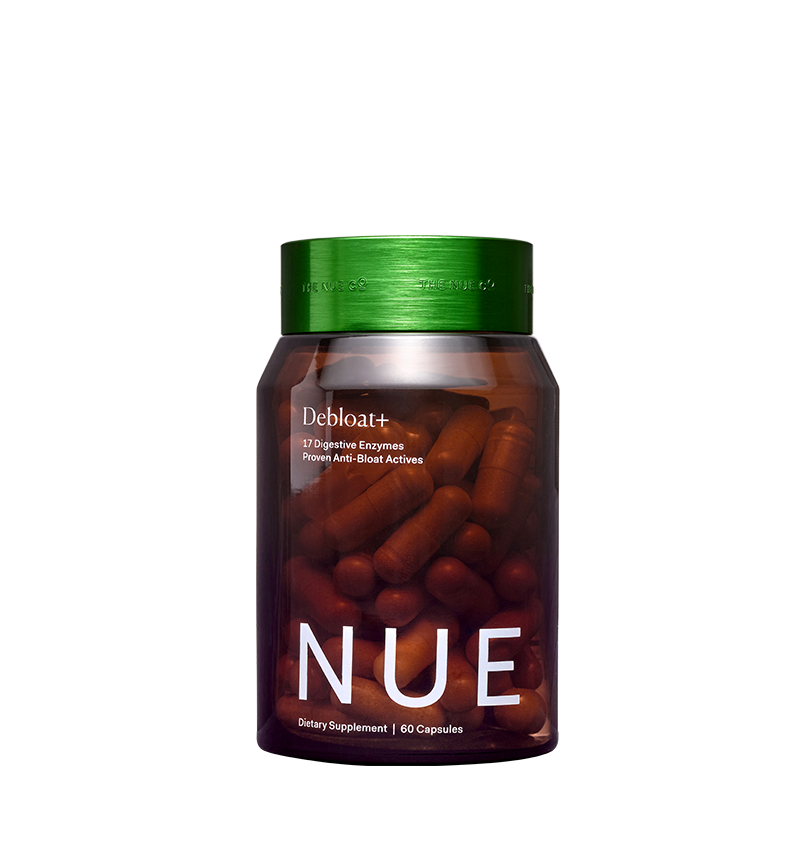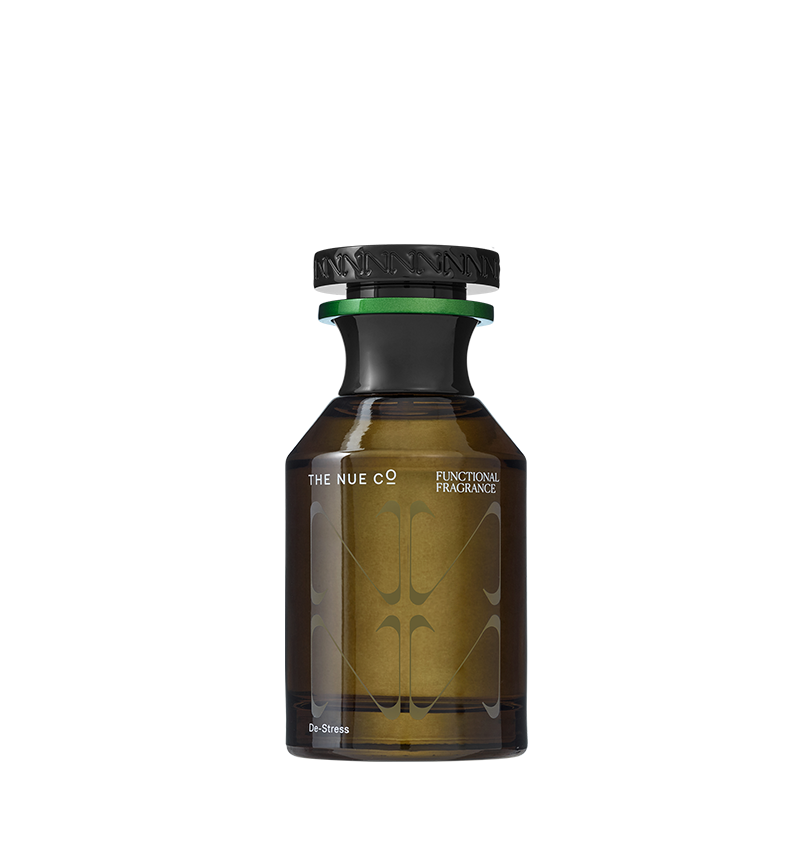What is the Gut-Brain Axis?
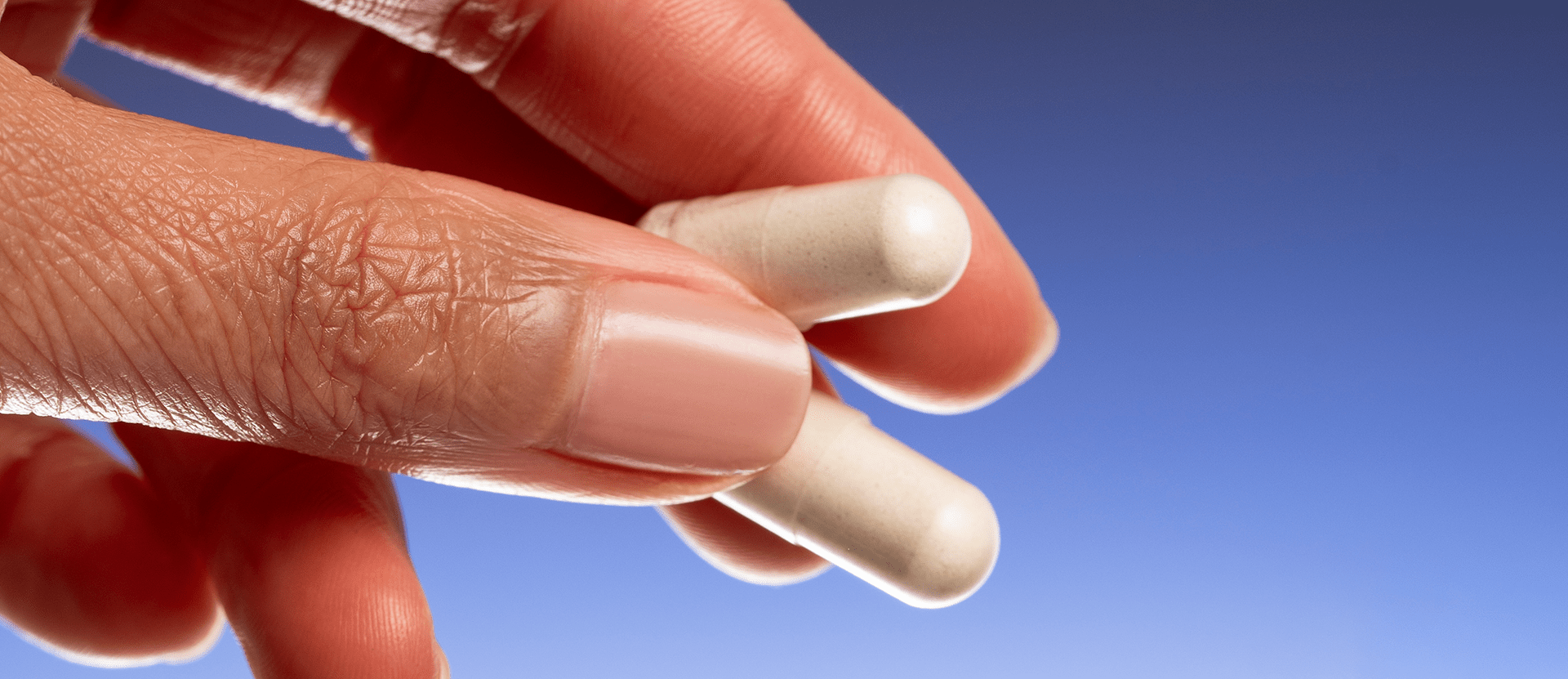
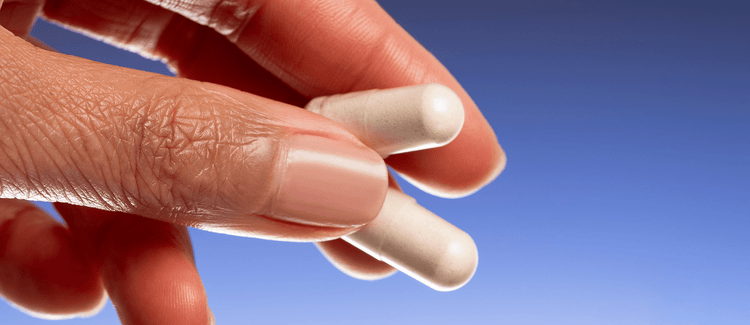
“Butterflies in your stomach,” “gut-wrenching” feelings, “stomach tied in knots” –– all of these phrases are commonly used to describe the physical feeling of emotions when they manifest in our bodies, and are perfect examples of the power of the gut-brain axis. Also referred to as the GBA, the gut-brain axis is the connection between your brain and gut microbiota. Its role is to make sure that both the gut and the brain are kept up to date of what is going on in each of them, from emotions to digestive issues. The most interesting aspect of this, however, and one that scientists are still just scratching the surface of, is how they directly affect each other and cause ripples in behavior. This is what we know.
How are the brain and gut connected?
It’s estimated that the gut has nearly 100 trillion bacteria, and contains 80% of the body’s immune cells. It’s 100x larger than the surface area of our skin, making it the largest body surface, and has more neurons than the entire spinal cord. Considering how much the brain already has to do, it’s no wonder that the gut needs a special operating system to run it, or separate nervous system: the enteric nervous system, or ENS. The ENS controls gastrointestinal, or GI movements, local blood flow, and secretions from the GI wall and glands (pancreases and gallbladder). It also can work independently from the brain through the creation of wave-like muscle contractions in the GI tract.
Its direct boss is the ANS, or autonomic nervous system, a subset of the central nervous system that basically is in charge of all the motions we do unconsciously. Take breathing for example: you don’t need to consciously make the decision to breathe, as your body does it naturally, and we only really notice it when we are out of breath, exercising, or performing some kind of mindful breath work, like meditation.
Vagus Nerve
The largest nerve in the ANS is the vagus nerve, which stretches all the way from the brain stem, where the spinal cord meets the brain, to the gut, branching out along the way to reach additional internal organs in the chest and abdomen. The vagus nerve is your gut and brain’s primary phone line, due to its composition. The vagus nerve is full of neurons, 80% of which are called “sensory afferent neurons,” which work to convey information from your gut to your brain. They are the neurons that signal the physiological status of the gut, dietary components, and microbial activity as well as composition (IE the makeup of the bacteria in your microbiome). Once the vagus nerve gathers enough information from the ANS, which has already come from the ENS, it sends it up to the brain.
Endocrine and Immune Systems
While the vagus nerve is the primary mode of communication, both the endocrine immune systems play significant roles, as the gut-brain axis relies on hormones and regulatory gut peptides from the endocrine system and cytokines from the immune system to signal the brain as well. Together, the three work together to keep the gut-brain axis functional and accurate.
How the gut and brain affect each other
Gut to brain
The simplest way to think about the connection from your gut to your brain is to imagine eating a large meal. At first, you’re hungry –– you’re ready to dig in, but then you eat maybe a little more than you meant to, moving from a feeling of satisfaction to a feeling of fullness. All of those feelings are created by the brain, but only made possible by the triggering of nerve receptors in the stomach as it expands, that's then tell our brain what is happening.
Our brain can also remember previous gut experiences, such as things that didn’t agree with us. In the case of food poisoning, for example, when our stomach starts to realize that the food in question isn’t good for us, neurotransmitters such as dopamine directly act on receptors, triggering nausea (the same triggers are also stimulated when the gut is inflamed). Once this happens, well –– you can imagine the rest (you throw up). But the most fascinating part of this is our body’s future responses to foods. Seeing, smelling, or even thinking of foods that have caused nausea and vomiting in the past can actually trigger nausea again –– meaning that the brain stores memories of past gut interactions.
It works slightly differently with your gut bacteria. When it starts to get out of balance, things tend to fall apart.
A bacterial imbalance leads to a state called “dysbiosis,”which means that the pathogen-causing bacteria are now in larger numbers than the good. This can lead to gut-related conditions such as IBD, IBS, and leaky gut syndrome, as well as cause inflammation in the gut.
Leaky gut syndrome is the perfect example of the impact that our gut microbiota can have on our brain. In the case of leaky gut syndrome, the body’s dysbiotic state causes the intestine to weaken, allowing for pathogenic bacteria to be able to escape –– effectively “leaking” out of the gut, and leading to inflammation. When this happens, one of the three messenger systems of the gut-brain axis, the cytokines (via the immune system) are triggered. They embark on a path to report the problem to the brain, and in doing so, trigger an important reporting system called the kynurenine pathway that relies on tryptophan, a protein that the body converts into serotonin to regulate mood.
When the tryptophan is chosen to act as a reporting agent instead of its designed function, however, it is effectively taken out of the queue it was in, in which it would be turned into serotonin. This means that your body has less serotonin circulating in your body than scheduled ––– leading us to become more anxious and depressed.
Meanwhile, the cytokines have made their way to the brain to report the issue, but when we have too many of them in our brain at once, it can cause further damage to brain cells and imbalance neurotransmitters. One study found that, when several healthy subjects with no previous history of depressive disorders were exposed to endotoxin infusions (pathogenic bacteria), it triggered the cytokine release and, subsequently, the subjects exhibited classic symptoms of depression –– proving a direct correlation between anxiety and depression, and inflammatory cytokines.
So to summarize: when bad bacteria outnumbers the good in our digestive system, it can lead to chemical reactions that can directly impact your brain, causing damage to brain cells and neurotransmitters while reducing serotonin levels, leading you to feel depressed and anxious.
Brain to gut
EMOTION
Ever felt a lurch in your stomach during a moment of panic? This is the direct response that your gut creates from whatever your brain is experiencing. When we experience an emotion, our bodies respond. If we’re happy, we’ll smile, if we’re angry, perhaps we’ll frown. This is the brain sending patterns of signals to facial muscles to tell them how to react. It works exactly the same way with your digestive system.
Imagine: you’re waiting for your morning bus. It’s late, but when it finally arrives, it drives right past you, despite you clearly waving for it to stop. You’re furious, and rightly so, but what will happen is that your stomach begins to contract due to the brain telling it what to feel, increasing the production of acid. It analyzes the pattern of signals supplied by the brain and responds appropriately. A similar thing happens when we’re anxious or upset, but interestingly enough, when we’re depressed, our intestines barely move at all. To put it bluntly: our gut directly mimics every emotion that our brain experiences.
This then impacts other organs, to create a completely coordinated and organized response to every single emotion as we feel it. Emeran Mayer explains it best in his book, The Mind-Gut Connection, when he writes: “Because people have always felt emotion in their gut, our language is rich with expressions that reflect this, like butterflies in your stomach, gut-wrenching experience, or stomach tied up in knots.”
CORTISOL
Another great example of the way that our bodies experience the gut-brain axis from the direction of the brain is through stress. When we’re stressed, a hormone called cortisol is released from our adrenal glands, which essentially acts as our brain’s main defense mechanism. In the moment, it boosts your energy and works to increase your blood sugar, suppresses the digestive system and alters immune system responses, but over time, can actually cause serious issues to the digestive system. Continuously high cortisol levels due to chronic stress can lead to an increase in the production of corticotropin-releasing factor (CRF), which can cause your immune system to go into hyper drive –– leading to further issues like inflammation, bloating, gas, and cramping, as well as exacerbated symptoms of IBS.
How to manipulate the gut-brain axis
While a lot of information out there about the gut-brain axis may make it seem like a fairly overwhelming concept, the good news is that this is not the case. In fact, there are easy ways to improve both your gut and your brain health, just by targeting your microbiota and keeping cortisol levels in balance. If there’s anything that Here are some of our favorite Nue Co. products that help with this.
PREBIOTIC + PROBIOTIC
Our signature blend, three daily capsules that deliver 15 billion probiotic spores per dose directly to where they need to go. By using probiotic spores as opposed to live bacteria (which is why many probiotics normally need to be refrigerated), our formula ensure that the bacteria survive the trip through your stomach and its acids –– meaning that they don’t activate and start working until they reach your small intestine, AKA right where they should be. The formula also includes prebiotic inulin derived from 100% organic chicory root to act as a fertilizer for the probiotics, ensure that by the time they are activated in your gut, that they are able to thrive and grow. Together, they help keep your microbiota levels balanced.
DEBLOAT+
For those already experiencing some of the negative sides of an imbalanced gut (IE symptoms of IBS), our Debloat+ is the way to go. The formula uses clinically studied licorice root extract, organic turmeric, ginger, and cinnamon to break up intestinal gas, relieve bloating, and calm an upset stomach. The licorice root in the formula, a patented version called Gutgard® , has been clinically proven to reduce bloating, nausea, gas, and abdominal fullness by 51% within 30 days, while 60% of subjects in the study were either symptom free or markedly improved within the same time period.
FUNCTIONAL FRAGRANCE
Not a perfume, but rather an anti-stress supplement. This fragrance was created using research from the Brain & Behavior Laboratory of the University of Geneva, which studied the usage of specific scents to trigger neural pathways connected to feelings of calm, serenity, and reassurance. It works to help lower your cortisol levels, which in the case of the gut-brain connection could then further alleviate potential digestive problems, through the use of scents such as palo santo, iris, bergamot, and cilantro. In a consumer trial on the formula, 96% of people felt instantly calmer after using Functional Fragrance, with 93% of them recommending it as an anti-stress aid.
Reference list
Albina, V. (2019). Leaky Gut and The Depression-Gut Connection - Victoria Albina. [online] Victoria Albina. Available at: https://victoriaalbina.com/leaky-gut/ [Accessed 17 Jan. 2020].
Carabotti, M., Scirocco, A., Maselli, M.A. and Severi, C. (2015). The gut-brain axis: interactions between enteric microbiota, central and enteric nervous systems. Annals of gastroenterology, [online] 28(2), pp.203–209. Available at: https://www.ncbi.nlm.nih.gov/pmc/articles/PMC4367209/.
Eufic.org. (2020). What makes us feel full? The satiating power of foods: (EUFIC). [online] Available at: https://www.eufic.org/en/food-today/article/what-makes-us-feel-full-the-satiating-power-of-foods [Accessed 17 Jan. 2020].
https://www.facebook.com/macdja (2016). Why Do We Get Nauseated. [online] JSTOR Daily. Available at: https://daily.jstor.org/why-do-we-get-nauseated/ [Accessed 17 Jan. 2020].
Karl, J.P., Hatch, A.M., Arcidiacono, S.M., Pearce, S.C., Pantoja-Feliciano, I.G., Doherty, L.A. and Soares, J.W. (2018). Effects of Psychological, Environmental and Physical Stressors on the Gut Microbiota. Frontiers in Microbiology, 9.
Liang, S., Wu, X. and Jin, F. (2018). Gut-Brain Psychology: Rethinking Psychology From the Microbiota–Gut–Brain Axis. Frontiers in Integrative Neuroscience, 12.
Mayer, E.A. (2018). The mind-gut connection : how the hidden conversation within our bodies impacts our mood, our choices, and our overall health. New York Harper Wave.
Molina-Torres, G., Rodriguez-Arrastia, M., Roman, P., Sanchez-Labraca, N. and Cardona, D. (2019). Stress and the gut microbiota-brain axis. Behavioural Pharmacology, 30, pp.187–200.
Nationwidechildrens.org. (2019). Stress Alters the Gut Microbiome. [online] Available at: https://www.nationwidechildrens.org/for-medical-professionals/tools-for-your-practice/connect-with-nationwide-childrens/pediatrics-online/2019/february/stress-alters-the-gut-microbiome [Accessed 17 Jan. 2020].
Neurohacker Collective. (2019). What is The Gut-Brain Axis? An Exploration of The Communication Pathways Between The Brain, The Gut, And The Microbiota. [online] Available at: https://neurohacker.com/what-is-the-gut-brain-axis [Accessed 17 Jan. 2020].



